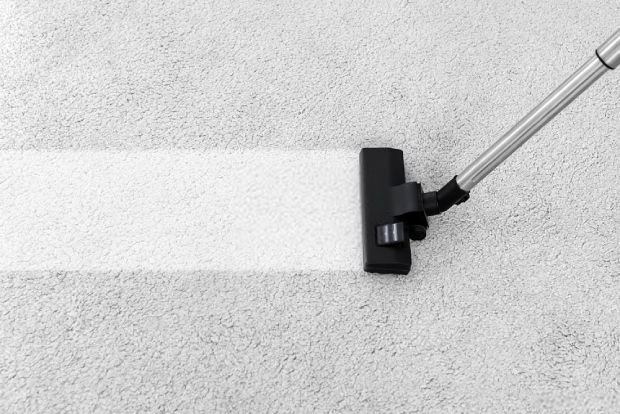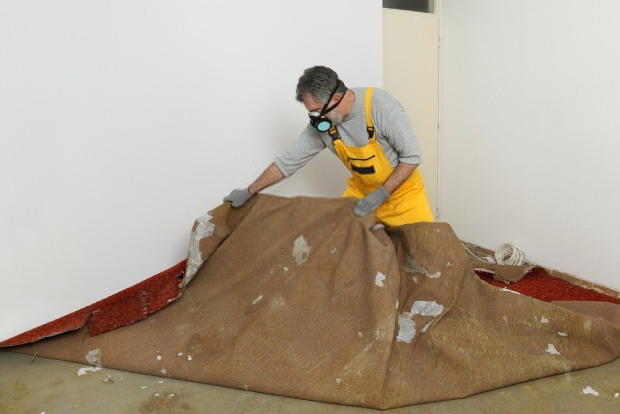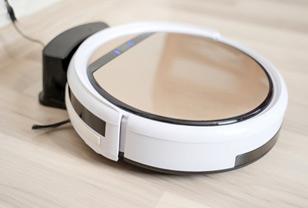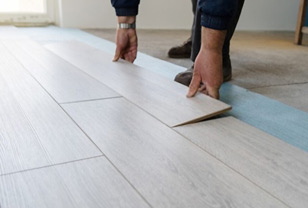Carpet Made Easy: How to Remove Carpet
- How to Change and Empty the Vacuum Bag: 5 Essential Steps to Remember
- How to Make Vacuum Smell Better - Why Does My Vacuum Cleaner Smell Bad
- How to Clean a Carpet - TOP 9 Cleaning Carpet Tips
But still, having the experts remove old carpeting isn’t going to be cheap, especially if you own a rather large house with most areas being covered with carpets. With many experts do charge their carpet removal by the square foot of the carpet, it could cost you from hundreds of dollars to thousands.
Luckily, with the right guides, it’s also possible for you to do your carpet removal all on your own. Hence, instead of having professionals do it for you, it’s recommended that you rent the right tools from certain service providers and do the job yourself.
In this post, we’ll provide all our complete guides on removing carpets and help you with installing new ones. Here, you’ll learn everything you need to know about carpeted flooring and how to remove carpet from your room or from stairs.
And at the same time, learn more about the benefits of carpeted flooring and how you can properly install new ones. Read carefully, as you’ll rely on our exact guides to get the job done right.

Old carpets will need to be removed
About carpeting
First, let us discuss the important benefits of wall-to-wall carpets and why you would want to have them in your house. And at the same time, why it’s recommended to replace your old carpets, as they are now pretty worn out?
The benefits of carpeted flooring
Here are the most notable benefits of carpeting that every owner would agree to:
Beauty and style
Right off the bat, a new layer of carpeting will give your room a new and refreshing look. That said, the aesthetic aspects it provides can completely change how you would perceive and feel the entire atmosphere.
With various choices for colors and textures, there are plenty of different decorations that you can have with the carpeted floorings. They can be a neutral foundation for your main decorations by adding complementary colors. Or serve as the main focal for your room design with powerful colorings. Plus, the soft and fluffy texture also makes the room more luxurious.
➜ RELATED: How to Get Dog Hair Out of Carpet - How to Get Rid of Dog Hair in House
Improve air quality
For most homeowners, this might not be noticeable as you first have your carpets installed. But with time and frequent maintenance, you can absolutely feel the air getting more and more refreshing. This is because your carpet is acting like a passive air filter, as it helps to trap dust that would otherwise move freely in the air. And by regularly vacuuming your carpet, you can easily clean up both the floor and the air at the same time.
Warm and cozy
The warming benefits of carpets are most noticeable in areas with cold climates as they provide excellent thermal insulation, and the cozy layer of the pile will keep you warm for a long time. Plus, the comfortable flooring allows you to sit and play whenever you want.
Add cushion and friction
In addition, the layer of pile also delivers great cushion and friction to your floors, thus reducing the chances of slips or the pain from falling. This is extremely important for families with toddlers and small children.
Prevent noises
And last but not least, having wall-to-wall carpets also boasts your room’s noise cancelation. This is because the airy layer of the pile can prevent the sound waves from traveling through, and its shock-absorbing nature will also reduce the vibration of sounds across the rooms. Hence, carpets are absolutely vital for noisy rooms in your house.

A nice carpet will complement your room
When and why do you need to remove your old carpets?
No matter how good an item is, it’ll eventually wear out over a certain amount of time. And this is also true with old carpets.
While you can significantly improve your carpets’ longevity with regular maintenance, there will be a time when you need to tear up carpet floorings and replace them with new ones.
These are the alarming signs that are mentioned below that will tell you exactly when and why you need to remove your carpets.
Your carpet is getting old
First and foremost, your carpet will need to be removed after many years of usage, despite frequent maintenance. That being said, you’ll know this when there are flattened areas all over your carpets, which would make them less appealing and cushioning. Plus, it’s also more slippery as you walk on them.
In addition, with warps and tears all over your carpet, people would likely trip as they walk on it, which isn’t something that you would want to see. Plus, these ugly areas also make your carpet less appealing and your entire room somewhat messier.
Having said that, with a new layer of carpet, you can enjoy a much better level of cushion and comfort on your carpet. Plus, the fresh and fluffy flooring will add a whole new feel to your miserable room.
➜ RELATED: How to Clean a Vacuum Filter: Tips and Tricks Worth Knowing
Stains and odors
Sometimes, you’ll also find yourself dealing with certain stains and odors on your carpet that is both ugly and smelly. Since you’ve refused to clean these stains when they are still new, and instead, hid them under your furniture, there is no way that you can completely treat them right now.
Plus, if they were food stains or pet urines, there are going to be all kinds of nasty odors coming out of your carpet, which is absolutely intolerable.
In this case, putting on a new layer of carpet would be a reasonable choice if you wish to have the room looking great and smelling awesome once again.
Dusty and allergens
After years or even decades of use, your carpets should be filled with dust and dirt, despite your best effort of regular cleaning. Your carpet would eventually get dirty from all the dust and dirt that hide underneath.
And although it’s possible to wash your carpet, you just cannot deal with the padding in the same way. Thus, replacing is certainly a must if you don’t want your family to suffer from repertory issues or allergens. After the process, you’ll find yourself owning a much cleaner room with few worries about dust or allergens.
Want a new change
And sometimes, you don’t have to wait until your old carpet has completely worn out to replace them. You can just perform the task if you feel like your room can really use a new and more refreshing design. That being said, it’s always possible to remodel your room with a new carpet that features completely different designs. And as a result, the new carpet will provide a new look and deliver a more refreshing atmosphere to your entire room.

Worn-out carpets will need to be removed and replaced
How to remove carpets
Now that you’ve decided that you really need to change your old carpeting, it’s time to get to work. And first, you’ll need to remove the worn-out layer of your old carpets. For those of you who don’t know how to rip up carpet, follow the steps that we have mentioned below with good precisions to effectively remove yours:
Step 1 – Preparation
You should start your job by having all the necessary ready. Here are the important items that you’ll need to prepare for the removal:
● Leather work gloves – Always put on a pair of heavy-duty leather gloves if you don’t want to hurt your hands while working. There could be sharp pieces of wood and metal that can easily cut through your skin. These should help you easily remove carpet from hardwood floors.
● Vise-grip – Use this if you need more assistance in removing your carpet from the tack strips.
● Dusk mask – While it might not seem so dirty, your carpet is filled with micro dust particles, allergens, and the like. Thus, it’s not recommended that you get to work without a good protective barrier for your breathing.
● Utility knife – For those who’re wondering how to cut carpet, you’ll find this particular tool extremely handy and effective as it would help you cut through the thick layer of carpets, making it easier to remove certain portions of the carpets.
● Vacuum cleaner – use this to clean your carpet before and after you perform the removal. This would significantly reduce the amount of dust and dirt that are present in the air and on the floors as you finish the process.
● Duct tape – Seal your rolled pieces of carpets with duct tape so that they won’t fall out of position once you finish the removal.
● Plier – The plier is going to work great when you remove staples that are still stuck on the ground.
● Pry bar – Use it to pry out the tightly sealed tack strips from your subfloor or concretes.
● Hammer - For tough spots, it’s also possible to assist your pry bar with a few accurate hammering on it.
● Broom and dustpan – They should come in handy when you need to clean up large and sharp debris from wood and metals. These are the things that shouldn’t be cleaned with your vacuum.
● Nails - Use this to fix the flooring if you find it necessary.
● Wax wood filler – Use this to refill the holes in your wood.
And after you’ve finished preparing the tools and items, it’s time to move on to the next step.
Step 2 – Clean the carpet
While it might sound like you’re contradicting yourself, cleaning the carpet before removing it is something that most professionals do, especially for long-neglected pieces of carpet. That said, you wouldn’t want your room to be covered with layers of dust and have an intoxicating atmosphere blocking your breathing.
Just start by removing all the furniture and items from the room and let them rest somewhere else while you perform the removal. With the entire room or stairs completely cleared, you can run the top rated vacuum cleaner on them a couple of times to collect pieces of hair and fur, dust and dirt, along with other small debris. This would prevent dust from terrorizing your nose while cutting through the carpet as well as falling all over your house as you carry the carpets out.

Vacuum your carpet before removal is recommended
Step 3 – Remove the carpet from the tack strips
Make sure to wear gloves before you start performing this step since rough surfaces and scratch your hands, and the sharp needles on the tack strips can accidentally hurt you.
On room
Now, into the cleaning, you can first start the process by using your utility knife and cutting off pieces of carpet at certain concerns of the room. Start pulling up carpet from those places now that you’ve had yourself a good grip on it.
Apply full force and use your entire body to lean back to the center of the room and remove the carpets. Follow the wall as you slowly but surely pull off the carpet from the installed tack strips. Finish the process by completing disconnecting it from the wall and the tack strips.
To avoid killing your back as you try to carry the entire carpet out of the room, instead, fold it up into squares and cut along the edges to have yourself some manageable pieces. Roll up the removed parts of the carpet and seal them tightly with your duct tape. Carry the carpets out of the room and place them where you intended.

Pull your carpet out from the tack strips
On stairs
For those who’re interested in how to remove carpet from stairs, you can start the removal by cutting across the top landing. Then use your vise-grip to effectively pull out the carpet from the riser. Then grab your hands on both ends of the newly-cut piece of carpet to work it out from the stapled patterns.
Use your arm and body weight to effectively pull them off the stairs. Feel free to switch your hands to a closer and more comfortable position on the carpet as you reach the lower levels of the stairs. It’s also possible to use your utility knife to cut off the excess part if it gets too long. This would allow you to have access to more manageable sections. Finish things up by doing exactly what you did with your room carpets.
Step 4 – Remove the padding
With the layer of carpet being removed, you’re now having access to the padding of the carpet, which would be a lot less challenging as you attempt to remove them.
On room
Most of your carpet paddings are made of several pieces of pads that were properly laid into position. Each of them is connected together and attached to the subfloor by a few lines of staples along their perimeters, which also makes it quite easy to remove them.
Just work your finger into a certain corner of the padding, and pull it up by following the patterns of the stapes. They should come right off quite easily and effortlessly. Do this on all the remaining pieces until the floor is completely cleaned.
Beneath you should lie the subfloor, which is now covered by a few pieces of staples that were left from the padding removal. Hence, if you’re wondering how to remove carpet staples, just use your plier to pick them up and throw them away. On the other hand, if your carpet was installed in the basement and on a concrete floor, then it’s going to be even easier as the paddings were often glued into the floor as stapling isn’t a good option in this case.
Once you’ve taken the piece out, just fold them up like how you would do with the carpets. Since the padding itself is pretty light and flimsy, it shouldn’t be too much of a problem for you to successfully get rid of them.

Move on to the padding once you finish removing the carpet
On stairs
Things even get easier on the stairs due to their limited area of coverage, as there were little paddings being used in the installations. Plus, sometimes, your paddings weren’t even connected to the stairs by staples.
They are often just placed on the stair and then repositioned when you install the carpets. And sometimes, there could be some glue under them, which isn’t something that could trouble you. Having said that, you just need to pick them up and roll them into small pieces as you put them away from the worksite.
Step 5 – Remove the tack strips
And now, for the most challenging part of the removal, you’ll find yourself dealing with the tack strips. Remember when you first install these pieces? Well, now it’s even more difficult as you try to remove them from your room floor or stairs.
Start by taking out your pry bar and applying them in front of the nailed spots on your tack strips. Use your arm and body weight to force the pry bar into the nail and pry it up as you lean down. If it’s too difficult to pry up the nail or work the pry bar into it, it’s also possible to use your hammer to force it in.
Make sure to aim the pry bar properly before smashing your hammer onto it. Remember, you don’t want to damage the subfloor underneath or the molding next to it. Do this on all pieces of tack strips on the floor until you’ve completely removed them.
The process is quite similar on both your floors and stairs, so you shouldn’t run into any problem trying to remove tack strips from these areas. Put all the pieces of the broken tack strips into a bag as you finish breaking them off.
Spend your time checking the subfloor and stairs for any remaining pieces of nails that are still hooked to the wood or concrete. Use your plier to grab them up and place them together with the broken tack strips.
Step 6 - Clean up the area and finishing
With the removal being finished, it’s time for you to clean up the room and stairs. And if it’s possible, you can spend some time fixing certain spots on the surfaces.
On room
Use your broom and dustpan to effectively gather up the scattering pieces of wood and metals that were left after the removal. Work the broom along the edges of the wall and along with the staples’ patterns as you effectively and thoroughly clean things up.
Also, spend some time stepping on the subfloor to notice any squeaky areas on it. Nail down a few areas that will need to be fixed and make sure that the squeaky is no longer present. Then run your vacuum around the room a few times to completely get rid of the dust and debris.
On stairs
And for the stairs, make sure you sweep your broom from top to bottom to ensure that it’s properly cleaned. Use the vacuum to collect small pieces of debris and dust to finish the cleaning. As for the ugly holes that were nailed down when you first installed your tack strips, you can easily cover them up with some wax wood-filling stick.
Conclusion
It’s quite obvious that you can clean your carpet frequently to keep it tidy and sanitized. But after years of wear and tear, you’ll have to remove your old carpets and replace them with new ones. Maybe because they are too dirty and worn out, or maybe you want to switch to a new design.
Nonetheless, for those of you who’re looking for how to remove carpet, you’ll certainly find our guide both intuitive and informative. Hope it can help you perform your carpet removal on your own. Thanks for reading, and we’ll see you in our future posts.







